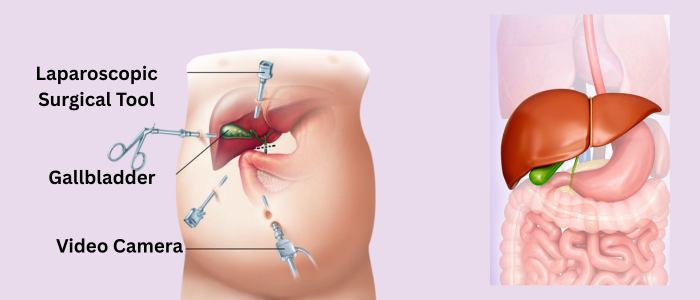
Gallbladder surgery, or cholecystectomy, removes the gallbladder, typically due to gallstones causing inflammation (cholecystitis) or blockages. Gallstones form from hardened bile deposits, leading to symptoms like severe abdominal pain, nausea, vomiting, fever, and jaundice. If untreated, complications like pancreatitis or infection can arise. Surgery is the primary treatment, often performed laparoscopically with small incisions for faster recovery. Open surgery may be needed for severe cases. The procedure removes the gallbladder, allowing bile to flow directly from the liver to the intestine. Most patients resume normal digestion, though some experience diarrhea or dietary adjustments. Risks include bile duct injury or infection. Post-surgery, patients are advised to follow a low-fat diet initially and avoid heavy meals. Recovery is usually quick, with many returning to normal activities within weeks.
At the heart of compassionate and expert surgical care stands Dr. Lakshit Tomar, a distinguished Surgical Gastroenterologist dedicated to improving the lives of his patients. With years of experience in advanced wound care, ostomy management, and complex gastrointestinal surgeries, Dr. Tomar blends surgical precision with a deep commitment to patient well-being.
Copyright © 2025 | Powered by [GLS IT Solutions]